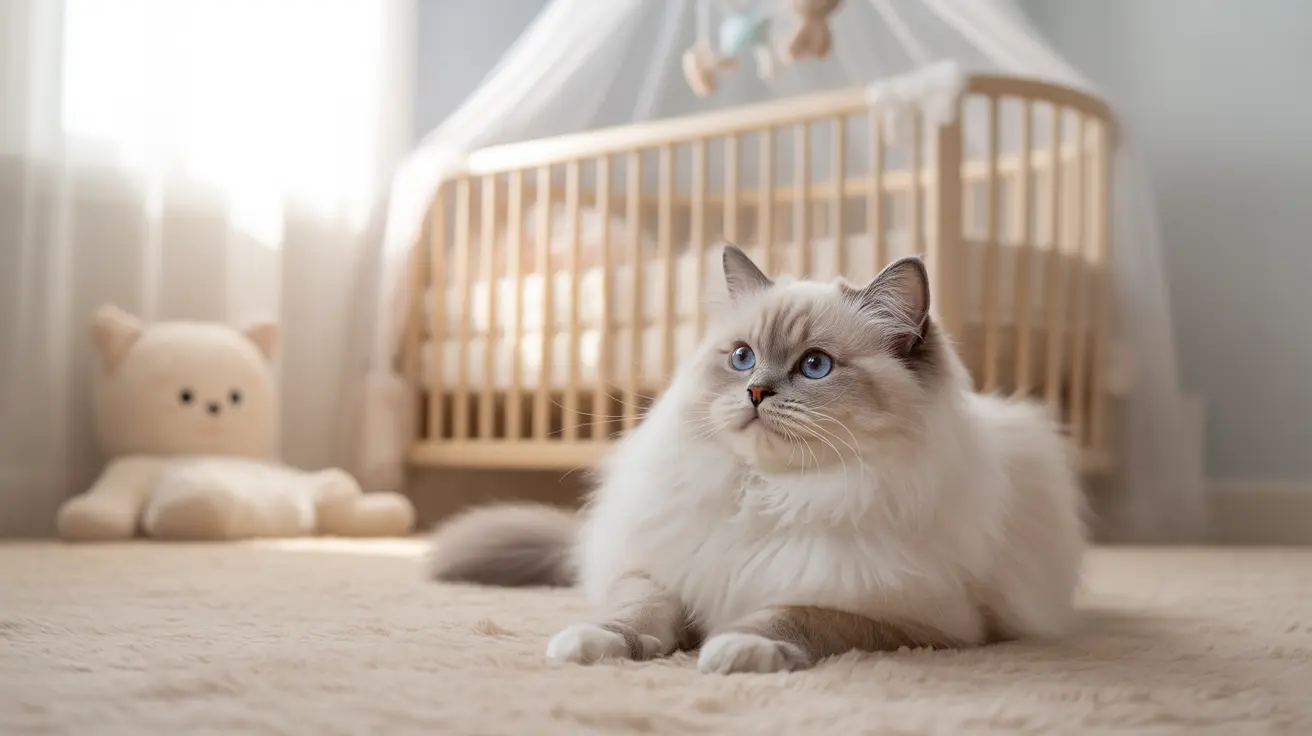As new parents prepare to bring their bundle of joy home, those who also have feline family members often worry about potential risks. Understanding the dangers of cats and newborn babies is crucial for creating a safe environment where both can thrive. This comprehensive guide will help you navigate the real risks while dispelling common myths about cats and infants.
Understanding the Key Safety Concerns
When it comes to cats and newborns, there are several primary safety considerations that parents need to be aware of. These include physical risks like suffocation and scratches, as well as health concerns such as zoonotic diseases. While most of these risks can be effectively managed with proper precautions, it's essential to understand them thoroughly.
Preventing Sleep-Related Risks
One of the most serious concerns is the risk of suffocation during sleep. While the old wives' tale about cats "stealing a baby's breath" is a myth, cats may be attracted to the warmth of a sleeping infant and could accidentally restrict their breathing. Never allow cats unsupervised access to sleeping areas, and always use proper barriers such as crib nets or closed doors.
Managing Disease Transmission
Cats can potentially transmit several diseases to infants, with toxoplasmosis being among the most concerning. This parasitic infection is primarily transmitted through contact with cat feces, not direct contact with cats. Other potential health risks include cat scratch disease and various bacterial infections.
Essential Safety Measures for Cat-Owning Parents
Implementation of proper safety measures is crucial for creating a harmonious household with both cats and babies. Consider these key strategies:
- Install secure barriers around the baby's sleeping area
- Keep litter boxes in areas inaccessible to infants
- Maintain regular veterinary care for your cat
- Practice proper hand hygiene after handling cats or their items
- Supervise all interactions between cats and babies
Creating Safe Spaces
Designate separate spaces for your cat and baby, ensuring each has their own safe territory. This helps reduce stress for your cat and minimizes the risk of unwanted interactions. Consider using baby gates and keeping the nursery door closed when not in use.
Dealing with Physical Interactions
While most cats are gentle, even well-meaning pets can accidentally scratch or bite. Teaching your cat appropriate boundaries before the baby arrives is essential. Use positive reinforcement to encourage gentle behavior and provide alternative spaces where your cat can retreat when feeling overwhelmed.
Health and Hygiene Protocols
Maintaining proper hygiene is crucial for preventing disease transmission. Regular veterinary check-ups, keeping your cat's vaccinations current, and maintaining a clean litter box are essential steps. Pregnant women should avoid changing cat litter or delegate this task to other household members.
Frequently Asked Questions
How can I prevent my cat from accidentally suffocating my newborn baby while sleeping?
Never allow cats in the room where your baby sleeps unsupervised. Install a crib net or mesh cover, keep nursery doors closed, and use baby monitors to ensure your infant's safety during sleep times.
What are the signs and risks of toxoplasmosis from cats for newborns and how can I protect my baby?
Toxoplasmosis symptoms can include fever, fatigue, and muscle aches. Protect your baby by keeping cats indoors, cleaning litter boxes daily (wearing gloves), and maintaining strict hygiene practices. The risk is primarily from cat feces, not direct contact with cats.
How should I handle and treat cat scratches or bites on my infant to avoid infections like cat scratch disease?
Clean any scratches or bites immediately with soap and water, apply an antiseptic, and monitor for signs of infection such as redness, swelling, or fever. Seek medical attention if these symptoms occur or if the wound appears deep.
What safety measures can I take to keep my baby safe from fleas and parasites carried by cats?
Maintain regular flea prevention treatments for your cat, vacuum frequently, wash pet bedding regularly, and keep your cat's living area clean. Consult your veterinarian about safe and effective parasite prevention protocols.
Can cats and newborn babies coexist safely, and what steps should parents take to ensure harmony and health?
Yes, cats and babies can safely coexist with proper precautions. Maintain regular veterinary care, create separate spaces, supervise all interactions, practice good hygiene, and gradually introduce your cat to baby-related changes in the household.
Conclusion
While there are legitimate concerns regarding cats and newborn babies, most risks can be effectively managed through proper precautions and awareness. By implementing appropriate safety measures and maintaining good hygiene practices, families can create a safe environment where both their infant and feline companion can thrive together.






